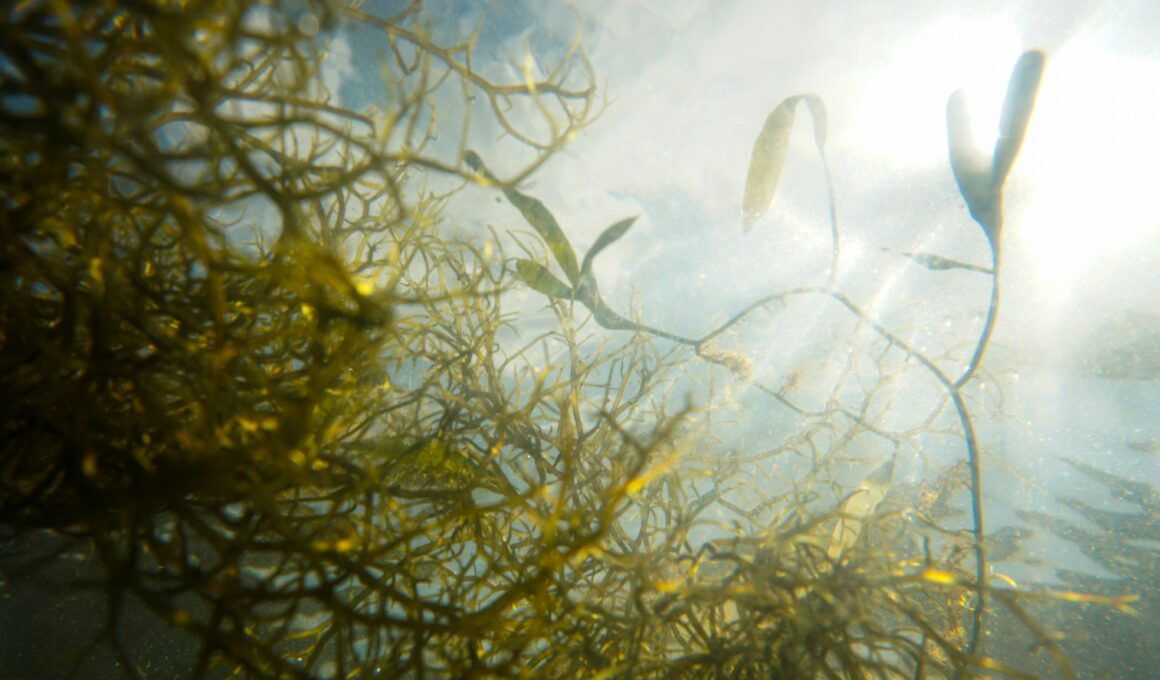When you think of seaweed, what comes to mind? Your favorite sushi roll or maybe a beach day ruined by a slimy encounter? Well, it’s time to rethink this oceanic underdog because seaweed might just be the superhero we need for tackling some of our planet’s biggest challenges, like climate change and food security. Recently, seaweed took center stage at the High-Level Political Forum (HLPF) on Sustainable Development, and the buzz was all about its game-changing potential. Here’s the lowdown on how this simple sea plant could help save the world.
Seaweed’s Rising Star
What’s the scoop? The global seaweed market is on a roll, and we’re not just talking about your maki. Over the past two decades, the market has more than tripled, skyrocketing from $5 billion in 2000 to an impressive $17 billion in 2021. And it’s not just a trend in the kitchen. Seaweed is popping up in everything from cosmetics to fertilizers, animal feed, and even sustainable packaging alternatives. In 2022 alone, seaweed imports were estimated at around $1.2 billion, showing just how much demand there is for this versatile marine marvel.
But here’s the kicker: Despite these big numbers, international trade in seaweed accounts for just 14% of the sector’s total market value. What does this mean? It means there’s still a lot of untapped potential in the world of seaweed. The World Bank has identified ten global markets where seaweed could grow by an additional $11.8 billion by 2030. So, whether it’s used in your salad or as a sustainable material in your next pair of sneakers, seaweed’s got a lot of room to grow.
The Climate Change Connection
Hold up, how does seaweed help with climate change? Great question. Seaweed is like the Swiss Army knife of climate solutions. For starters, it’s a fantastic carbon sink. As it grows, seaweed absorbs carbon dioxide from the water, which helps to mitigate the effects of climate change. Think of it as nature’s way of vacuuming up all that excess CO2. And because seaweed doesn’t require fresh water, fertilizers, or pesticides, it’s a low-impact crop that doesn’t contribute to land-based pollution. That’s a big win for both our oceans and our atmosphere (SDG 14).
But that’s not all. Seaweed is also showing promise in reducing methane emissions from cows. Yes, cows. Researchers have found that adding a small amount of seaweed to cattle feed can reduce their methane emissions by up to 80%. Considering that methane is a potent greenhouse gas, that’s a pretty big deal. So, not only does seaweed help soak up CO2, but it could also help cut down on one of the biggest contributors to agricultural greenhouse gases.
Food Security and Sustainable Livelihoods
Okay, but what about feeding the planet? Glad you asked. Seaweed isn’t just a climate superhero; it’s also a powerhouse when it comes to food security (SDG 2). For centuries, people in Asian cultures and Indigenous communities have consumed seaweed as a staple food, and for good reason. It’s packed with nutrients like iodine, calcium, and vitamins A, C, and K. Plus, it’s a great source of protein and fiber, making it a superfood in every sense of the word.
Beyond its direct nutritional benefits, seaweed also plays a role in sustainable agriculture. It’s used as a natural fertilizer that can help improve soil health and increase crop yields. And as an ingredient in animal feed, it provides a sustainable alternative to more resource-intensive feeds like soy and corn. All of this adds up to a more diversified and resilient food system, which is exactly what we need in a world facing increasing food insecurity due to climate change and other pressures.
But let’s not forget about the people behind the seaweed. In many coastal communities, especially in developing countries, seaweed farming is a lifeline. It provides jobs, supports local economies, and empowers women, marginalized groups, and Indigenous people. Take the Philippines and Indonesia, for example, where over a million smallholder seaweed farmers make their living from the sea. By supporting these small-scale farmers and ensuring that policies are inclusive and fair, we can help lift people out of poverty (SDG 1) and build more sustainable communities.
A Global Movement
Sounds great, but who’s making this happen? Enter the South Korea and the European Union, two major players in the seaweed game. South Korea is the world’s third-largest producer of seaweed, thanks to its robust regulatory frameworks and advanced cultivation techniques. They’ve got everything from food safety standards to farm environment management down to a science, which has allowed them to develop a thriving seaweed industry.
Meanwhile, the European Union is getting serious about seaweed too. They’re supporting the growth of the algae sector through funding, policy actions, and cooperation with member states. By including seaweed in their blue economy strategies and streamlining the allocation of licenses for growing algae, the EU is setting the stage for a seaweed boom.
The Path Forward
So, what’s next for seaweed? To truly unlock the potential of seaweed, we need more research, better data, and smarter policies. It’s all about building the right infrastructure and technology, ensuring safe and sustainable farming practices, and fostering strong partnerships between governments, businesses, and communities. One big idea on the table is creating an international center of excellence dedicated to the development of the seaweed sector. This would help coordinate efforts, share knowledge, and drive innovation in seaweed farming and processing.
And let’s not forget about the importance of cooperation. Multi-stakeholder partnerships, like the Global Seaweed Coalition, are crucial for bringing together public, private, and civil society actors to promote sustainable seaweed production. By working together, we can ensure that the seaweed sector grows in a way that’s equitable, inclusive, and environmentally responsible.
The Challenges Ahead
Hold on, is it all smooth sailing? Not quite. While seaweed has a ton of potential, there are also challenges that need to be addressed. For one, there’s a lack of quality data and case studies to inform best practices. This makes it harder for policymakers and businesses to make informed decisions about investing in the seaweed sector. There’s also the issue of transparency and traceability within the global seaweed value chain. Ensuring that seaweed is sustainably sourced and that the benefits are equitably shared among all stakeholders is key to the sector’s long-term success.
Another challenge is scaling up production in a way that doesn’t harm the environment. While seaweed farming is generally considered low-impact, it’s still important to manage farm environments carefully to avoid overharvesting and ensure that marine ecosystems are protected. This is where robust regulatory frameworks, like those in South Korea, can make a big difference.
And finally, there’s the need for better communication and public awareness. Seaweed might be a superstar in the making, but it’s still flying under the radar for most people. By raising awareness about the benefits of seaweed and promoting its many uses, we can help drive demand and support the growth of this sustainable industry.
The Bottom Line
Why should we care? Because seaweed has the potential to be a game-changer for our planet. It’s not just a superfood; it’s a sustainable solution that can help tackle some of the world’s most pressing challenges, from climate change and food security to poverty and gender inequality. By investing in seaweed and supporting the growth of the sector, we can create a greener, healthier, and more equitable future for all.
Seaweed might just be the secret ingredient we’ve been missing in the fight against climate change and hunger. With its ability to reduce greenhouse gases, provide sustainable livelihoods, and boost food security, this marine marvel is proving that sometimes, the smallest things can make the biggest difference.
So, next time you see seaweed on your plate or floating in the ocean, remember: it’s not just a sea plant. It’s a powerhouse of potential, ready to help us build a better world.
The information provided in this article is for educational and informational purposes only. While we strive to ensure accuracy, the content may not reflect the latest developments or scientific research on seaweed and its potential benefits. Readers are encouraged to conduct their own research and consult with professionals before making any decisions related to the topics discussed.








